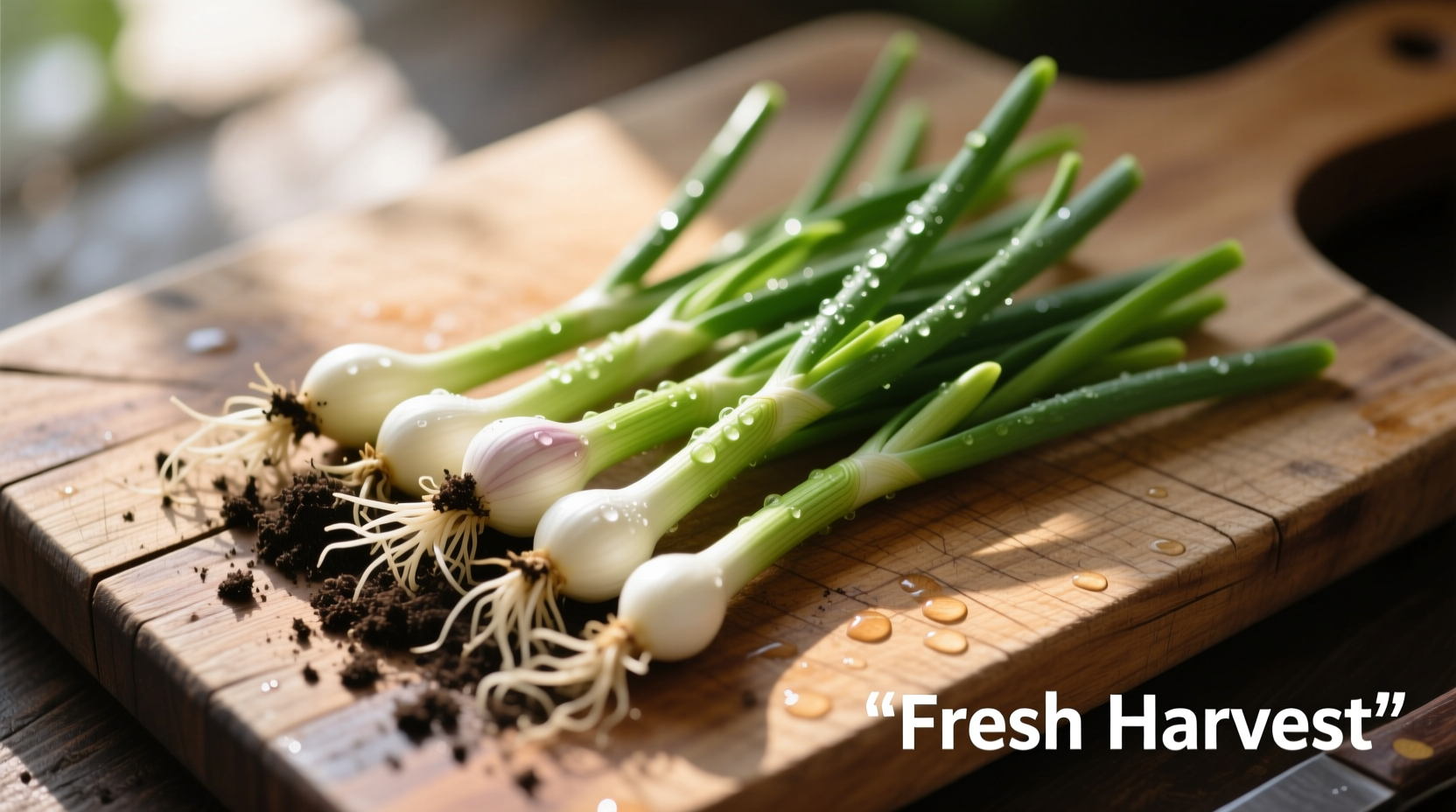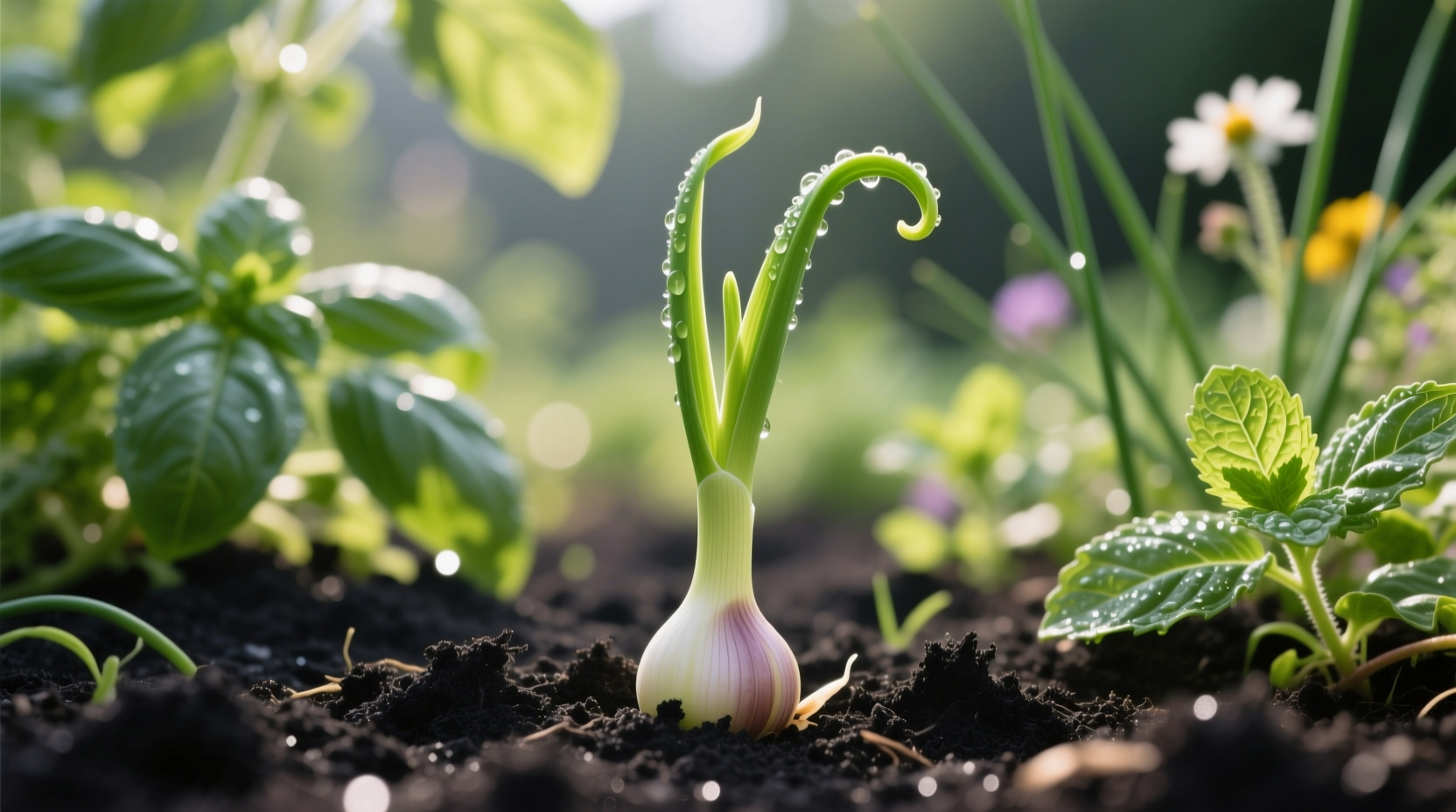Unlock the Culinary Potential of Garlic Shoots
Discover why professional chefs and home cooks are reaching for garlic shoots—the springtime treasure that transforms ordinary dishes with subtle garlic essence without overwhelming heat. This complete guide reveals everything you need to identify, select, prepare, and grow these delicate green shoots, plus science-backed nutritional benefits and chef-tested cooking techniques that maximize their unique flavor profile.
Unlike mature garlic that dominates dishes with intense pungency, garlic shoots deliver nuanced garlic notes perfect for delicate preparations where balanced flavor matters. Whether you're shopping at farmers markets or growing your own, understanding how to properly handle these seasonal gems ensures you'll elevate salads, stir-fries, and sauces with professional results every time.
What Exactly Are Garlic Shoots? Clearing the Confusion
Garlic shoots represent the earliest edible growth stage of garlic plants, appearing 4-6 weeks after planting when the green shoots emerge from the soil. These tender stalks with their characteristic flat leaves and hollow structure contain developing bulbils (immature garlic cloves) at their base, offering the first harvestable portion of the garlic plant before bulbs fully form.
Many confuse garlic shoots with garlic scapes—the curly flowering stalks that appear later in the season from hardneck garlic varieties. Understanding this distinction prevents recipe failures and ensures proper usage. The key differences appear in this verified comparison:
| Characteristic | Garlic Shoots | Garlic Scapes | Mature Garlic |
|---|---|---|---|
| Growth Stage | Earliest emergence (4-6 weeks) | Mid-season flowering stalks | Full maturity (8-9 months) |
| Appearance | Straight, flat green shoots | Curling, round flower stalks | Bulb with papery skin |
| Flavor Profile | Mild, fresh, grassy-garlic | Subtle garlic with vegetal notes | Intense, pungent, spicy |
| Edible Parts | Entire shoot including immature bulbils | Stalk only (remove flower bud) | Cloves only |
| Seasonality | Early spring (March-May) | Late spring (May-June) | Fall harvest, year-round storage |
This botanical distinction matters because substituting scapes for shoots (or vice versa) dramatically alters dish outcomes. Garlic shoots' delicate nature requires gentler handling than the more robust scapes, which can withstand higher cooking temperatures.
Nutritional Powerhouse: Science-Backed Benefits
Garlic shoots deliver impressive nutritional advantages while maintaining their culinary versatility. According to USDA FoodData Central analysis, 100g of fresh garlic shoots contains:
- Significant vitamin C (25% of daily value) - higher than mature garlic
- Rich in vitamin K (150mcg per 100g) supporting bone health
- Contains allicin precursors with antioxidant properties
- Lower sulfur compounds than mature garlic (reducing digestive discomfort)
- Provides 2.5g of dietary fiber per serving
Research published in the Journal of Agricultural and Food Chemistry confirms that young garlic shoots contain higher concentrations of certain flavonoids compared to mature bulbs, contributing to their milder flavor profile while maintaining health-promoting compounds. The immature stage preserves more water-soluble nutrients that diminish as garlic matures.

Unlike mature garlic that requires crushing or chopping to activate allicin formation, garlic shoots naturally contain soluble alliinase enzymes that provide immediate flavor release without harshness. This biochemical difference explains why chefs prefer them for raw applications where mature garlic would overwhelm delicate ingredients.
Where to Find and How to Select Quality Shoots
Garlic shoots appear briefly in early spring, typically from March through May depending on your climate zone. Your best sources include:
- Local farmers markets - Look for vendors specializing in heirloom garlic varieties
- CSA programs - Many vegetable subscriptions feature seasonal garlic shoots
- Specialty grocers - Stores focusing on seasonal, local produce
- Asian markets - Often carry them under names like "garlic spears" or "green garlic"
When selecting garlic shoots, prioritize these quality indicators:
- Vibrant green color throughout the entire shoot (yellowing indicates age)
- Firm, crisp texture that snaps when bent (limp shoots are past prime)
- Minimal bulb development at the base (larger bulbs indicate maturity)
- No flowering (once flowers appear, texture becomes fibrous)
- Moist root ends showing recent harvest
Proper storage extends freshness: wrap shoots in slightly damp paper towels, place in a perforated plastic bag, and refrigerate for up to 5 days. Never store garlic shoots in airtight containers, which accelerates spoilage through moisture buildup.
Mastering Garlic Shoot Preparation and Cooking
Professional chefs maximize garlic shoots' potential through precise preparation techniques that preserve their delicate flavor. Follow this chef-approved workflow:
- Cleaning: Rinse gently under cool water, separating any dirt trapped at the base
- Trimming: Remove dry root ends and any yellowed tips (reserve for stock)
- Sectioning: Cut into 2-inch pieces, keeping thicker and thinner portions separate
- Cooking sequence: Add thicker base portions first, then tender greens later
For raw applications like salads and garnishes, slice shoots thinly on a diagonal to maximize surface area while maintaining visual appeal. The entire shoot is edible, though the very base may require slightly longer cooking when used in stir-fries or sautés.
Temperature control proves critical—garlic shoots lose their distinctive flavor when exposed to temperatures above 140°F (60°C) for extended periods. Add them during the final 1-2 minutes of cooking to preserve their fresh garlic essence. When substituting for mature garlic, use a 3:1 ratio (3 parts shoots to replace 1 clove garlic) since their flavor is significantly milder.
Popular culinary applications include:
- Stir-fries: Add during last minute of cooking for vibrant color and flavor
- Omelets and frittatas: Substitute for chives with more garlic character
- Purees and pestos: Blend with nuts and olive oil for spring-inspired sauces
- Pickling: Quick-pickle for 24 hours for refrigerator condiments
- Infused oils: Steep in warm oil for delicate garlic flavor without bitterness
Simple Guide to Growing Your Own Garlic Shoots
Home gardeners can enjoy multiple harvests by understanding the garlic growth timeline. Here's the verified progression from planting to harvest:
| Timeline Stage | Key Development | Harvest Opportunity |
|---|---|---|
| Weeks 1-2 | Root development underground | No harvest possible |
| Weeks 3-4 | First green shoots emerge | First garlic shoot harvest begins |
| Weeks 5-6 | Shoots reach 6-8 inches tall | Peak garlic shoot harvest period |
| Weeks 7-8 | Scapes begin forming (hardneck varieties) | Final garlic shoot harvest |
| Weeks 20-24 | Bulb maturation | Main garlic bulb harvest |
For continuous harvests, plant garlic cloves in successive batches every 2-3 weeks starting in early fall through late winter. Container gardening works exceptionally well—use 6-inch deep pots with well-draining soil, placing them in sunny windowsills. Water when the top inch of soil feels dry, and harvest shoots when they reach 6-8 inches tall, cutting 1 inch above the soil line to allow regrowth.
University of California Cooperative Extension research confirms that garlic shoots harvested at the proper stage contain optimal flavor compounds while maintaining tenderness. Their agricultural studies show that delaying harvest beyond 8 inches results in rapid fiber development that diminishes culinary quality.
Seasonal Menu Planning with Garlic Shoots
Maximize your garlic shoot experience by aligning usage with their brief seasonal availability. Early spring dishes particularly benefit from their fresh flavor profile:
- March-April: Use raw in salads, sandwiches, and as garnish for soups
- May: Incorporate into light pasta dishes and seafood preparations
- Early June: Preserve through pickling or freezing for later use
Chef Antonio Rodriguez recommends this simple technique for preserving peak flavor: blanch shoots in boiling water for 30 seconds, immediately transfer to ice water, then freeze in airtight containers. "This method locks in the fresh garlic essence while maintaining texture," he explains. "You'll taste spring all year long in your sauces and soups."
When garlic shoots disappear from markets, transition to garlic scapes (available 2-3 weeks later), which offer similar culinary applications with slightly stronger flavor. Understanding this seasonal progression ensures continuous garlic flavor throughout spring and summer.
Frequently Asked Questions About Garlic Shoots
Can I eat the entire garlic shoot?
Yes, the entire garlic shoot is edible including the tender green stalks and immature bulbils at the base. The only parts typically discarded are dried root ends and any yellowed or tough sections at the very top. For optimal texture, separate thicker base portions from tender greens when cooking, adding the base first since it requires slightly longer cooking time.
How do garlic shoots differ from green garlic?
Garlic shoots refer specifically to the young green sprouts emerging from planted cloves, while green garlic describes immature garlic plants harvested before bulb formation. Green garlic has a more developed white stem section resembling a scallion, whereas garlic shoots are entirely green with minimal bulb development. Both offer milder flavor than mature garlic but green garlic has slightly stronger taste.
What's the best way to store garlic shoots?
Store garlic shoots wrapped in slightly damp paper towels inside a perforated plastic bag in the refrigerator crisper drawer. Properly stored, they'll maintain freshness for 4-5 days. Never store in airtight containers as trapped moisture accelerates spoilage. For longer preservation, blanch shoots for 30 seconds, cool in ice water, then freeze in airtight containers for up to 6 months.
Can I grow garlic shoots indoors year-round?
Yes, garlic shoots grow well indoors year-round. Plant cloves in 4-6 inch pots with well-draining potting mix, placing them in a sunny windowsill or under grow lights. Water when the top inch of soil feels dry, and harvest shoots when they reach 6-8 inches tall, cutting 1 inch above soil line. Indoor-grown shoots may be slightly less robust than outdoor-grown but maintain excellent flavor.
How much garlic shoots equals one clove of garlic?
Use a 3:1 ratio when substituting garlic shoots for mature garlic cloves. Three tablespoons of chopped garlic shoots (approximately one full shoot) equals the flavor intensity of one standard garlic clove. Remember that garlic shoots provide more subtle flavor, so you may want to adjust quantities based on your desired intensity level and whether you're using them raw or cooked.











 浙公网安备
33010002000092号
浙公网安备
33010002000092号 浙B2-20120091-4
浙B2-20120091-4